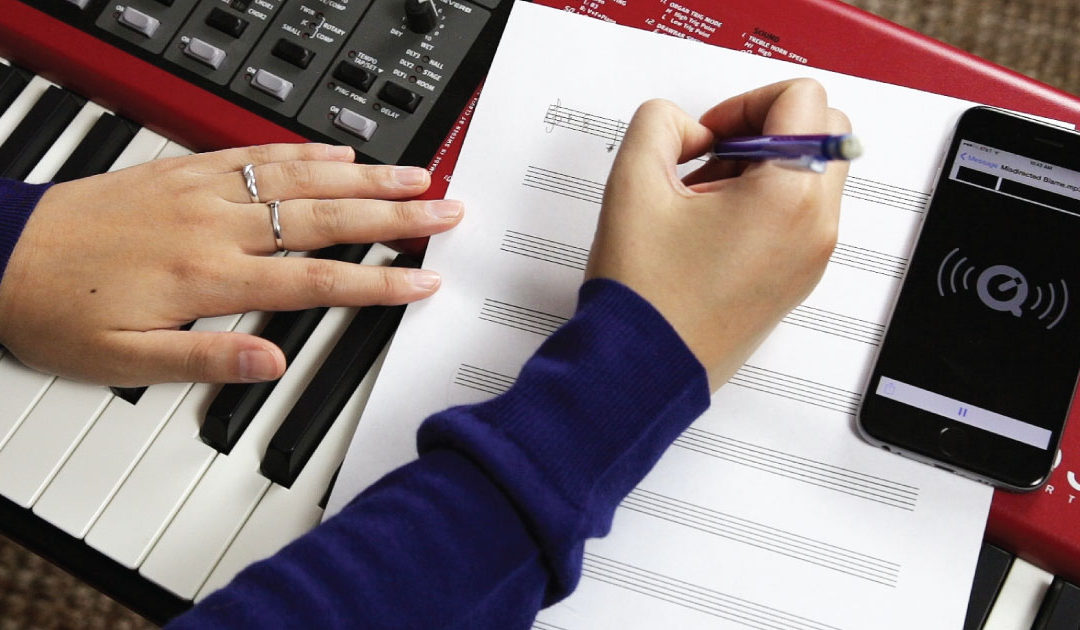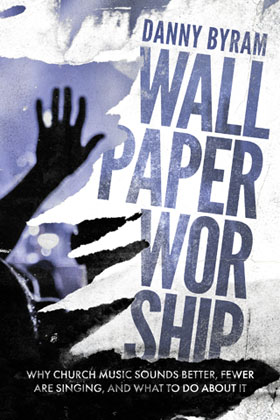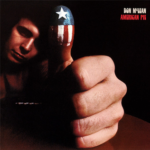loading...

by Danny Byram | Sep 24, 2018 | Church Leadership, Leadership, Music & Songwriting, Worship, worshipmusic

I love living in this age of ministry. I wish it had come sooner. In my early Christian/singer/songwriter career in the 1990s, most churches and military chapels where I performed still reflected the church architecture of the 1920s. A piano on one side, organ on the other, 50 choir chairs as a backdrop – you get the picture. We would arrive, and begin moving the chairs, move the piano up on stage, and figure out where to put the heavy wooden pulpit. Then, hunt for a 6-foot folding table and position it on top of the pews where we could mix sound. Finally, we would haul in our sound system. At the time, most church PA (Public Address) systems were designed for talking heads, and guaranteed fidelity akin to AM radio news coming through 3″ speakers in a 1965 Plymouth.
We used to moan and dream about the day when church platforms would be designed for communicating with the tools that the rest of the performing world were using: lighting, screens, and world-class sound. As usual, the church was decades behind. But we’ve caught up! Yay! Today I only have to show up, plug in and play. Oh yeah…and minister the Gospel. But now, with all the gear and gadgets, we can also entertain while we minister truth. How cool. How relevant. How risky. Here’s why…
While entertainment can communicate truth, its greater purpose is to distract, help us forget our pain and temporarily check out of reality. True worship makes us focused, aware, and present in the reality of how much we need God’s grace and mercy. That reality can be hard on us emotionally as we stare into His holiness and have a similar reaction as Isaiah: “I am undone for I am a man of unclean lips and I dwell among a people of unclean lips.” (Isaiah 6:1-5) It is very human to want to skip the emotional challenge of facing His holiness and our un-holiness.
I can already hear some reacting: “Wait! We are more than conquerors – We share the righteousness of Christ – God doesn’t see our sin anymore – He suffered so we wouldn’t have to!” Absolutely correct. Yet the paradox in those truths is we can be incredibly naïve to think the Christian experience is for the purpose of eliminating discomfort, especially how, when or where we are triggered to stumble, even as believers. Paul assured us (2 Corinthians 7:10) that kind of “Isaiah sorrow” is an appropriate response to God’s presence, for that kind of sorrow leads us away from sin’s influence and into His holiness, which transforms us (Isaiah 6:6-7). We don’t need more information. We need more transformation.
True worship leads us away from ourselves, our preferences, our tastes, our story and into His heart, His reality, His preferences, His story. We say we have the greatest life-changing Gospel message the world has ever heard. Yet it takes more gear, better gadgets and shorter sound bites to get people to pay attention. What an interesting age in which we live!
Want entertainment with your Gospel? Fine. It’s available everywhere. Just remember it’s simply a tool to communicate a Gospel that can be uncomfortable yet truly life-changing.
“Let us consider how to stimulate one another to love and good deeds, not forsaking our own assembling together, as is the habit of some, but encouraging one another; and all the more as you see the day drawing near.” Hebrews 10:24-25

by Danny Byram | Sep 2, 2018 | Church Leadership, Gratitude, Leadership, Worship

Imagine being invited to dine at the most influential and wealthiest person’s home in your city. As you try to get over the fact you were invited at all, you’d probably be curious: why was I invited? After you are convinced this is real, you prepare for the big evening. Clothes: check. Teeth brushed: check. Car washed: check. Manners: check.
The big night is here! You are greeted at the door by a butler and escorted in. Suddenly the host appears. He and his wife are thrilled you have come. Something is awry as you look around. You are the only one invited. The meal is served and it is perfect. The conversation is all about you: your dreams, your goals, your marriage, your kids, your family. After dessert (a perfect chocolate mousse cake with raspberry puree!), everyone shares their favorite song, poem, book, or movie. The evening ends with an invitation to come again. It was perfect. The next day what do you do? (Hint: what did your mother teach you?) Write a “thank-you” note!
God has invited us to an incredible feast. Jesus, His Son, has opened the door to the parlor and greets us like an excited host. Through His incredible gift of love, grace, mercy and redemption He has made it possible for all who desire, to come and partake of His Father’s feast. Once we walk through the door (John 10:7) we begin to experience a meal of love, joy, peace and fellowship that makes anything else seem like a quick grub fest at a greasy spoon. So what then is our response to God? (Hint: what did your mother teach you?) Worship, no matter the style, culture or location, is our thank-you note to God.
In Luke 19:37-38 Jesus is journeying toward Jerusalem and a multitude of His followers began shouting “Blessed is the King who comes in the Name of the Lord! Peace in heaven and glory in the highest!” The text reveals why they were shouting: they began to praise God for all the mighty works they had seen. What mighty works have you seen? What miracles have happened in your life? What have you prayed about lately that you have seen the answer revealed?
As we gather to worship, how ever we worship, our songs – recitations – sacraments – prayers – rejoicing – praying – weeping – are our “thank-you” notes to God. Does He want to be thanked? (See Luke 17:11-19). Try it, and watch your heart enlarge and His blessings flow.

by Danny Byram | Aug 27, 2018 | Church Leadership, Leadership, Worship, worshipmusic

Johann Sebastian Bach (1685-1750) is recognized by musicians as the greatest of church music composers. However, Bach was not interested in congregational singing. Here’s why.
Bach’s goal was to compose the greatest music ever performed in church. He succeeded. Throughout the Baroque period as the pipe organ grew in popularity – and in its ability to mimic orchestral instrument sounds – organists became more skilled in mastering the instrument. Bach’s music was so good and advanced, it challenged the skills of instrumentalists and singers. What resulted was ornamental interludes between hymn stanzas and excessive alteration of hymn tunes. Lead singers (in the Italian operatic style of the day), as well as instrumentalists, would take off on a credenza (a fancy musical term for “licks”) leaving congregational singing in the dust. When the composer, instrumentalists or vocalists hid what was familiar to their congregants inside fancy arrangements or behind their excellent abilities, it gave the signal to congregants: “Just listen to what we know how to do!”
Does this sound familiar? It seems the Baroque phenomenon has recycled. When congregants gather today to sing together but are given a concert performance with 80% new music, and 20% familiar songs hidden inside of elaborate arrangements – which become un-singable except for those performing them – the message is clear: “Just listen to what we know how to do!”
Throughout history, the church had eras of glorious corporate worship followed by stumbles into observation-based passivity. Some of these periods lasted for hundreds of years until an outside movement helped the church find her voice again and she began to worship God in new ways that were alive in spirit and truth. If we fail to consider the historical context in which we inherited the practice of worship, we find ourselves repeating the mistakes of the past, no matter how well we gift wrap those mistakes.
The good news is: if it’s “baroque,” it can be fixed! (Worship Workshops). There is already a groundswell movement among younger believers who recognize the ruse. People are not stupid. When they walk away from church feeling used as an audience for a weekly group of performers, get ready for a movement to start. I hear stories constantly: people leave for coffee during the music; some arrive purposely late; others are skipping the show altogether and meeting in homes. Even Christian leaders and book publishers I talk with are asking: “What has happened?” A better question to ask is: “What is getting ready to happen?”
Wallpaper Worship is self-correcting. An institution never starts a movement to correct itself. Church movements always start under the church’s nose. People eventually leave what they feel is rote, to find that which they feel is real. Some megachurches may still be filling seats and parking lots. But pastors, worship leaders, and lay leaders tend to ignore fixing anything until they see numbers plateau or decline. Meanwhile, many worshipers – who are leaving in search of deeper waters – are asking “how many cupcakes can I eat until my body demands something more substantial?” Trends always cycle. If it’s “baroque,” it will be fixed, one way or another.
“In Wallpaper Worship, Danny Byram defuses all the pointless dichotomies that so many books on worship get lost on. He gets to the core issues as only someone who has been involved for decades in shaping worship services, both great and small, could do. This book is not about changing our methods, but how our hearts can be changed by shifting priorities and focus and by learning to truly care for those who find themselves simply showing up and lining the walls during worship.” – Michael Card, Songwriter, Author, Bible Teacher
Wallpaper Worship: Why Church Music Sounds Better, Fewer Are Singing, And What To Do About It

by Danny Byram | Aug 7, 2018 | Church Leadership, Leadership, Worship

Wallpaper Music – music that is piped into a dentist’s office or supermarket – is pleasant to the ears but does little for the spirit. Wallpaper Worship has taken our churches by storm. Stroll into a church and watch the congregants observing as opposed to participating. As sincere as those on the platform seem, as great as the music sounds, many congregants aren’t connecting with the “experience.” Wallpaper Worship is code language for: “It isn’t important that you participate. We will do this for you. We just need you to be our audience.” In his classic book Worship Is A Verb, Robert Webber said, “Worship is not something done to us or for us, but by us.”
From what I have witnessed as I have traveled speaking and performing on five continents, churchgoers are experiencing Wallpaper Worship in congregations as large as ten thousand and as small as one hundred. Many church leaders say this kind of non-participatory experience is what the culture demands. This idea reveals a core problem: the church has redefined worship to fit a cultural model instead of a biblical model, much to the ignorance of newly churched believers, and to the dismay of worshippers who have been around long enough in their faith-practice to know the difference.
Wallpaper Worship isn’t new. God tells the prophet Ezekiel “you are nothing more to them than a sensual singer who sings beautifully and plays well on an instrument; they hear your words but they do not practice them.” (Ezekiel 33:31-33). The prophet Amos expressed God’s similar strains: “I despise your assemblies…Take away from me the noise of your songs; I will not listen to your instruments. But let justice and righteousness roll down like rivers…” (Amos 5:21-24). Jesus tells the Samaritan woman, “The hour is coming when neither on this mountain nor in Jerusalem will you worship the Father…” (John 4). In other words, a form isn’t as important to God as we think. Apparently, it never was.
“Honestly, Danny! If attendance is up, social media followers increase weekly, pastor’s pension fund is performing well, and our music sounds world-class, is there a problem?” Perhaps a more relevant question is: If the parking lot is full but the mouths of worshippers are empty, what’s wrong with this picture?
If you are a worshipper or a leader who recognizes the problem, I have news: There are simple solutions to achieving participation, no matter what style of worship service in which you are involved. And the solutions are easy to initiate without upheaving the culture of your church! “Wallpaper Worship Removal Workshops: The Tips and Tools For Achieving Participation” are being scheduled around the country for contemporary, traditional and liturgical churches. Here are some testimonials from leaders I’ve worked with for decades:
“Danny was my worship leader for years. He has earned the right to be heard.” – Philip Yancey, author
“Danny gets to the core issues as only someone who has been involved in shaping worship services, both great and small, over decades, could do.” – Michael Card, songwriter, Bible teacher
“Danny understands worship and he understands how to help others worship. He will make you think. And he will make you want to worship like you never have before.” – Richard Blackaby
The time for a change has come! If you see it, hear it, feel it, sense it, share this blog post with your leaders or with those you lead. “The time is coming – indeed it’s here now…The Father is looking for those who will worship Him in spirit and truth.”
To find out how to bring a workshop to your locale, click here: WORKSHOP INFORMATION To purchase Danny’s book WALLPAPER WORSHIP: WHY CHURCH MUSIC SOUNDS BETTER, FEWER ARE SINGING AND WHAT TO DO ABOUT IT, click here: WALLPAPER WORSHIP. Danny and Angela live in Loveland, CO and can be reached at db@dannybyram.com.

by Danny Byram | Jul 27, 2018 | Church Leadership, Music & Songwriting, Worship

Recently an acquaintance in my men’s group, an accomplished guitarist who teaches public school, shared his elation to have passed the “audition process” to play in his church’s worship band. However, he had a look of uncertainty when he shared with me what he was experiencing.
First, he is having to learn to play his instrument through an “in-ear monitor,” an earplug that plays back all the instruments on the platform. In-ears, as we call them, are valuable when there are many musicians trying to hear themselves from open floor monitor speakers. The stage noise gets so loud it interferes with the house mix. In-ears are a good solution, but take some getting used to.
Next, he was having to learn to play to a “click track”, an electronic metronome pumped through his in-ear monitor. These are used when musicians struggle to stay in tempo, traditionally a problem with non-professionals. Instruments begins to conflict and compete, as singers, guitarists and keyboardists tend to rush tempos, while the drummer and bass player are trying to hold tempos at bay. My friend also stated he was forced to mimic a keyboard part, imported through the internet, which was being heard by the congregants through the house mix. Finally, he shared a new requirement coming down: players have to spend their home hours memorizing 5-6 song charts per week, many of which are rarely repeated after the first performance.
Hearing him talk, I was assuming he was in a church that seated 2,000 or more. Not so. His church gathers 200 people weekly.
He came to his church team simply wanting to play music and assist in leading his fellow congregants into a musical worship experience that was warm, meaningful and fun. Instead what he has found was a process rife with anxiety, pressure and perfection. It seemed disconnected from the congregants, disingenuous, and a hassle. He put away his guitar and dutifully took a congregational seat to “let the pros” do it for him. The pros are hired musicians, not involved in his church.
I hear stories like this regularly. Somewhere, someone or some “worship-industry company” came up with the idea that this should be the model for small local-church music. Much of our millennial generation of worshippers know nothing else. As one who has performed for and produced large events, these technical tools can be necessary for helping professionals perform in a way that is more seamless. I get that. But who told these small churches that they are arenas or stadiums? Who told these music worship pastors they have to drive their volunteers into a world of professional gear, technique and prowess for which they are unprepared, nor possess the time to develop? For years, many larger churches have given up on using volunteers and simply hire outside music professionals. The small churches, like my friend’s, are following suit.
The important question: Is all this necessary for congregants to experience God’s presence together?
Worship leaders, who desire to pastor good-hearted, talented volunteers would do well to consider: is what I am doing real or is it rote?
ROTE: “A routine, fixed, habitual, or mechanical course of procedure; proceeding repetitiously, without meaning.”

by Danny Byram | Jun 22, 2018 | Church Leadership, Music & Songwriting, Worship, worshipmusic
As a songwriter, I have subscriptions to online periodicals that keep me updated on what’s going on in the songwriting and recording industries. One publication sends out a monthly notice of recording artists and companies looking for new song material of all genres. Recently a request came through that caught my eye. It was for a group looking for new songs for their upcoming Christian recording. The description of the kind of song they are looking for read: “Uplifting Christian with solid beat. Lyrics must not contain Bible references or Jesus or God.”
My first thought was this cannot be serious. That’s like asking for love songs that don’t mention love. Then, other thoughts emerged: do consumers of “uplifting Christian music” understand a phrase like that as self-contradicting? Do Christian consumers know this is going on prior to the release of what they are hearing played on the radio?
After attending a local megachurch service, I evaluated the songs performed by the band on the platform. There were songs that spoke clearly of Jesus and contained direct scriptural phraseology. There were also songs that could have been used in any context, with any religion that professes a positive tone (Buddhist, Baha’i, Shinto). The lyrics were uplifting, the beat was “solid,” but no reference to anything that was exclusively Christian.
Those of us who grew up in the origins of what became known as Contemporary Christian Music remember well when Christian music started receiving secular radio airplay. Most of those songs that passed the “airplay audition” were toned down in religious-speak to give a positive message with a veiled Christian meaning, so as to gain access to a wider audience. At the time, some staunch consumers of Christian music were offended, boycotting artists who released such songs. But the industry’s purpose was accomplished: put Contemporary Christian Music into the mainstream marketplace and let the listeners decide if it’s acceptable.
Today there is a much more specialized genre within Christian music: Worship. This genre title supposedly denotes songs that speak of one’s intimate response to the Object of Worship, namely God the Father, God the Son, God the Holy Spirit. To call a song a “worship song” implies perhaps that it has more substance than simply a song about love and grace, albeit God’s love and grace. A “worship song” categorically qualifies lyrically to be used within corporate worship contexts by its: a) declaration of God’s works or attributes (News Flash: we get those in the Bible); b) response of humankind to His works or attributes; or c) ability to express devotional reflection of how His unique attributes, works, and divine Self (yes, it’s a good idea to name Who we are worshiping) has transformed one’s life.
When songs presented in a worship service possess no lyrical references to God, Jesus or scripture, is it fair to assess, sweet as the song may be, that it may not qualify to be called “Christian” much less “Worship?” There is a lot of good music out there – and a lot of uplifting songs in many popular genres, and many that are written by songwriters who happen to be Christians. God bless them! Yet, those who lead crowds from church platforms would shepherd their sheep well to be careful in choosing songs that are worthy of being used within a worship context. Everything called “Christian” may not necessarily be; everything called “Worship,” ditto.

















